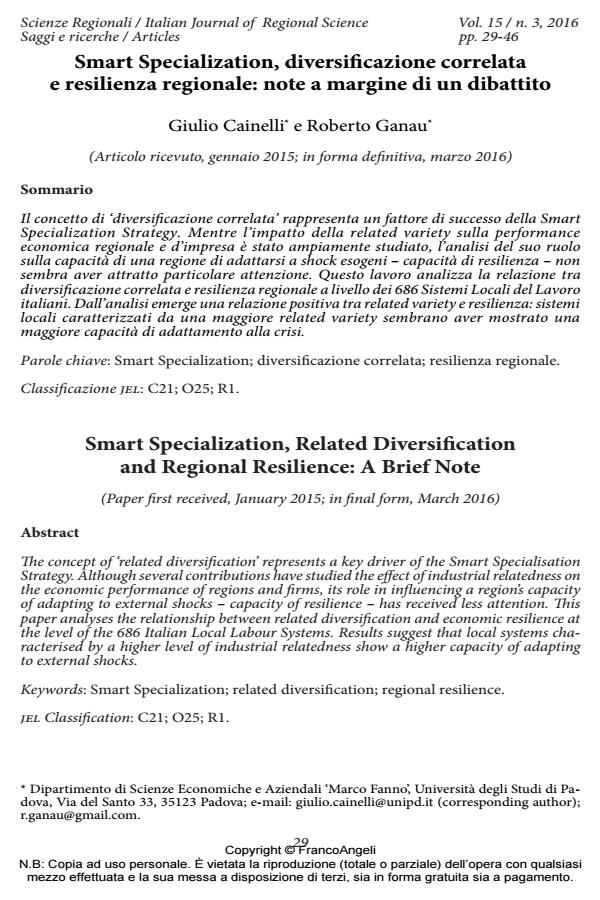Smart Specialization, Related Diversification and Regional Resilience: A Brief Note
Journal title SCIENZE REGIONALI
Author/s Giulio Cainelli, Roberto Ganau
Publishing Year 2016 Issue 2016/3
Language Italian Pages 17 P. 29-45 File size 289 KB
DOI 10.3280/SCRE2016-003002
DOI is like a bar code for intellectual property: to have more infomation
click here
Below, you can see the article first page
If you want to buy this article in PDF format, you can do it, following the instructions to buy download credits

FrancoAngeli is member of Publishers International Linking Association, Inc (PILA), a not-for-profit association which run the CrossRef service enabling links to and from online scholarly content.
The concept of ‘related diversification’ represents a key driver of the Smart Specialisation Strategy. Although several contributions have studied the effect of industrial relatedness on the economic performance of regions and firms, its role in influencing a region’s capacity of adapting to external shocks - capacity of resilience - has received less attention. This paper analyses the relationship between related diversification and economic resilience at the level of the 686 Italian Local Labour Systems. Results suggest that local systems characterised by a higher level of industrial relatedness show a higher capacity of adapting to external shocks.
Keywords: Smart Specialization; related diversification; regional resilience.
Jel codes: C21; O25; R1.
Giulio Cainelli, Roberto Ganau, Smart Specialization, diversificazione correlata e resilienza regionale: note a margine di un dibattito in "SCIENZE REGIONALI " 3/2016, pp 29-45, DOI: 10.3280/SCRE2016-003002